Opinion
Sri Lanka’s Foreign Policy amid Geopolitical Transformations: 1990-2024 – Part IV
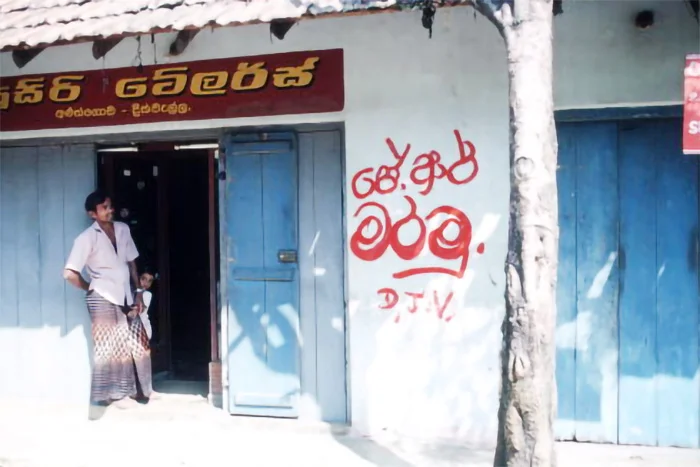
Sri Lankan Foreign Policy since the End of the Cold War
By the end of the Cold War, Sri Lanka’s foreign policy priorities were predominantly shaped by its armed conflict with the LTTE, despite pivotal shifts in its regional and global geopolitical spaces. The significance of the country’s foreign relations was largely viewed through the lens of its strategic needs in the ongoing civil war, often overshadowing other broader regional and global developments.
The Indo-Sri Lanka Peace Accord of 1987 and the subsequent establishment of the Provincial Council system under the 13th Amendment to the Constitution failed to bring lasting peace and merely perpetuated the vicious cycle of violence. Meanwhile, the uprising (1987-1989) led by the Janatha Vimukthi Peramuna (JVP) and its ruthless suppression deepened the political and social turmoil and tarnished the country’s democratic credentials, further constraining the government’s ability to focus and react to broad external strategic developments. As a result, the critical shifts occurring in South Asia, the Indian Ocean, and the global strategic environment after the Cold War were more or less overlooked in Sri Lanka’s foreign policy decisions.
Following the decisive military defeat of the LTTE in 2009, Sri Lanka underwent a significant shift in its politico-strategic needs, marking the beginning of a new phase in the country’s foreign policy. With the conclusion of the protracted civil war, a different set of issues came to the forefront and decided Sri Lanka’s foreign policy and geopolitical priorities. Accordingly, the evolution of Sri Lanka’s foreign policy in the post-Cold War era can be divided in two distinct phases, with the end of the war in 2009 acting as a pivotal turning point.
Enduring Crises and Foreign Policy
under President Premadasa
When Ranasinghe Premadasa assumed the presidency after a violence-ridden election, Sri Lanka was mired in multi-faceted crises. The Indian Peace Keeping Force (IPKF), initially deployed to supervise the Peace Accord, quickly found it embroiled in violent conflict with the LTTE in the North. Maneuvering the IPKF’s withdrawal without alienating India became a delicate and daunting challenge. Meanwhile, the brutal suppression of the Janatha Vimukthi Peramuna (JVP) insurgency in the South only deepened the country’s instability and culpability, further intensifying international backlash over human rights violations.
Despite facing significant challenges, Sri Lanka’s foreign policy lacked coherence and strategic direction. The government’s foreign policy responses were often reactive, addressing events in isolation rather than within a broader strategic framework. Decision-making appeared to be driven more by immediate political considerations than by long-term objectives. As a result, Sri Lanka became entrapped in a foreign policy dilemma, struggling to manage multiple crises across various fronts simultaneously.
One of President Ranasinghe Premadasa’s key achievements was persuading/pressuring India to withdraw the Indian Peace Keeping Force (IPKF) from Sri Lanka in 1990. However, it also strained Indo-Sri Lanka relations in the short term. One of the key achievements of President Ranasinghe Premadasa was persuading India to withdraw the Indian Peace Keeping Force (IPKF) from Sri Lanka. However, this success came at the cost-damaging Indo-Sri Lanka relations.
During a public meeting on June 1, 1989, President Premadasa demanded the complete withdrawal of the IPKF from Sri Lanka by July 29, 1989, giving India just two months’ notice. India was taken aback by the manner in which this demand was made and made it clear that Sri Lanka could not impose a unilateral deadline. India was only prepared for a phased withdrawal and had limited options. In response, India made a misguided decision to train a Tamil National Army.
In an effort to pressure India into withdrawing the Indian Peace Keeping Force (IPKF) from Sri Lanka, President Premadasa sought to leverage the South Asian Association for Regional Cooperation (SAARC). In July 1989, Sri Lanka boycotted the SAARC Ministerial-level meeting in Islamabad, Pakistan. Furthermore, Sri Lanka made it clear that it would not host the SAARC Summit scheduled later that year in Colombo. The Sri Lanka informed SAARC countries that the Summit could not precede in Colombo as long as the IPKF remained stationed in the country against its will (RavinathaAryasinha, 1997: 54)
After V.P. Singh of Janata Dal became Prime Minister of India in December 1989, the withdrawal of the Indian Peace Keeping Force (IPKF) from Sri Lanka was expedited. In contrast to Rajiv Gandhi’s position, I.K.Gujral, the External Affairs Minister in the Janata Dal government, stated that “Tamil security is an internal matter of Sri Lanka.” He expressed hope that the Sri Lankan government had learned from the lessons of history and would no longer deny the country’s ethnic minorities their due rights (Sunday Times, 29 April 1990).
However, the rescheduled Summit for Colombo in 1990 was ultimately not held there. The Maldives insisted on hosting the summit in Malé, coinciding with the 25th anniversary of it becoming a Republic. The failure of the planned 1990 summit in Colombo also reflects the complex regional dynamics at the time.
After the withdrawal of the Indian Peace Keeping Force (IPKF) in 1990, the Liberation Tigers of Tamil Eelam (LTTE) swiftly reemerged as a formidable military and political force in the North and East of Sri Lanka, setting the stage for the onset of Eelam War II in June 1990. In the 1990s, parallel to the expansion of Sri Lankan Tamil Diaspora, the LTTE’s international influence grew significantly.
Its front organisations in Western countries became increasingly active, openly fundraising, pressuring host governments on behalf of the LTTE, and even facilitating the transportation of arms and supplies to the conflict zones in Sri Lanka. This growing international network of support posed a substantial challenge to the Sri Lankan government. Moreover, the LTTE frequently framed its actions as a response to alleged human rights violations by the Sri Lankan government, using this narrative to justify its activities and gain international sympathy and support. The complexities of this issue—encompassing both military confrontations and political maneuvering—posed a formidable challenge that required a comprehensive strategy and sharp diplomatic acumen.
The Premadasa administration failed to fully recognise the growing significance of the international public sphere and the increasing prominence of international human rights frameworks. These were often dismissed as instruments of the LTTE’s propaganda. The Sri Lankan government held a largely negative view of Western countries that raised human rights concerns, perceiving these countries as supportive of the LTTE. This perception, coupled with a failure to distinguish between the LTTE and the broader ethnic conflict, impeded the government’s ability to formulate an effective strategy in response to international criticism.
Despite his unconventional approach, President Premadasa recognised that the Foreign Ministry was in disarray, lacking direction amidst the decisive challenges facing the country. In response, he established a Foreign Affairs Study Group, chaired by Dr. Gamani Corea, to address the situation (Dayan Jayatilleka, 2017). The group completed its report on restructuring Sri Lanka’s foreign policy and diplomatic missions, but before it could be presented, President Premadasa was tragically assassinated. Following his death, President Wijetunga, the caretaker president, assumed office but hesitated to take any new initiatives on the matter.
Change Vision and Restructuring under President Chandrika Bandaranaike Kumaratunga
The efforts to instill a new policy vision and reshape the Ministry of Foreign Affairs (MFA) began after the People’s Alliance (PA) assumed power in 1995 under the leadership of President Chandrika Bandaranaike Kumaratunga. By the time Kumaratunga assumed the presidency, the MFA was in disarray—lacking direction and burdened by excessive politicisation. To address this, President Kumaratunga appointed Lakshman Kadirgamar as Minister of Foreign Affairs. Drawing on his extensive experience as an international civil servant, Kadirgamar implemented reforms to streamline recruitment, promotions, and diplomatic postings, restoring some order to the MFA. At the same time, the government sought to bolster Sri Lanka’s democratic image on the international stage.
Strengthening the country’s credentials as a functional democracy was viewed as essential for garnering global support in addressing the LTTE military challenge. In this context, internal policy reforms were expected to provide strong backing to a foreign policy with a clear vision and direction.
The PA government marked a significant departure from the antagonistic stance of its predecessors towards international human rights bodies. Recognising the growing influence of the global public sphere on national policies, the PA government made a deliberate effort to engage with key international human rights organisations, such as Amnesty International, Human Rights Watch, and the United Nations. These engagements included open dialogues aimed at addressing concerns about Sri Lanka’s human rights situation.
The PA government’s commitment to international human rights standards and norms was demonstrated by its ratification of several major international human rights conventions. Additionally, the PA Government worked to strengthen domestic human rights institutions, particularly the Human Rights Commission of Sri Lanka (HRCSL), further solidifying its dedication to human rights both within Sri Lanka and on the international stage. These efforts were seen as essential for two reasons: promoting domestic reconciliation and enhancing Sri Lanka’s international credibility.
In light of the geopolitical implications of India’s strategic rise and changes in the South Asian geopolitical landscape, developing strong ties with India remained a key achievement of Sri Lanka’s foreign policy under the People’s Alliance (PA) government. After decades of mutual suspicion,
accusations, and tensions, both countries recognised the importance of normalising their relations. President Chandrika Bandaranaike’s new vision and foreign policy approach provided a significant opportunity for a fresh start towards rapprochement. The Indian government’s diplomatic shift, marked by the Gujral Doctrine introduced by External Affairs Minister I. K. Gujral in 1996, further paved the way for improved bi-lateral relations. Indo-Sri Lanka relations had not been as cordial for decades as they were under President Chandrika Bandaranaike Kumaratunga. A key testament to the South Asian policy of the Kumaratunga administration was the 10th SAARC Summit held in Sri Lanka in 1998. During this summit, informal discussions between India and Pakistan, initiated through the personal efforts of President Kumaratunga, marked a critical development in the regional strategic context.
Under President Premadasa, Sri Lanka’s relations with Western powers, particularly Britain and the United States, began to deteriorate rapidly. For a small country like Sri Lanka, which was grappling with a significant internal armed conflict with international Diaspora linkages, navigating the post-Cold War global strategic landscape became a critical challenge. Nearly two-thirds of Sri Lanka’s export market was tied to the West—primarily Britain, the United States, and the European Union. At the same time, the LTTE’s international headquarters operated from Western capitals. Given this, Sri Lanka paid a steep price for its adversarial stance toward these Western powers. In contrast, one of President Chandrika Bandaranaike Kumaratunga’s notable achievements was her efforts to foster better relations with the West. By implementing internal democratic reforms and adopting the PA’s approach to the ethnic crisis, she created a more favourable environment for diplomatic engagement. This foreign policy shift paid off: In 1996, the United States resumed arms sales to Sri Lanka, and the US “Green Beret” corps began offering advanced training to the Sri Lankan security forces. This military support included specialized training missions by the US Navy SEALs, the US Air Force Special Operations Squadron, and the US Army’s Psychological Operations Group. The proscription of LTTE as a terrorist organization by the United States in October 1997, followed by similar designations from the United Kingdom in 2000 and Australia in 2001, dealt a severe blow to the LTTE international operations.
The dynamics of the crisis, however, posed significant obstacles to the continued implementation of this policy. Negotiations with the LTTE, which began in October 1994, collapsed on April 17, 1995, when the LTTE withdrew from both the talks and the ceasefire after four rounds of discussions. The hope of achieving a negotiated settlement with the LTTE was dashed within six months. The conflict with the LTTE once again became the central focus of foreign policy, but this time, the government’s
approach shifted from defensive to more assertive.
With the onset of Eelam War III, the government launched the Reviresa operation in November–December 1995 and regained control of Jaffna from the LTTE. In September 1996, the government conducted the Sath Jaya operation, which led to the recapture of Kilinochchi. However, the situation began to change in 1998. The government’s attempt to establish a land route to Jaffna failed, resulting in heavy human and material losses. By late 1998, military camps in Kilinochchi, Mullaitivu, and Elephant Pass fell to the LTTE. Between 1999 and 2000, the Sri Lankan government forces suffered continuous setbacks on the military front.
Similarly, the proposal for the devolution of power, which had been incorporated into a draft of the new constitution, became entangled in political debates with the United National Party (UNP). The country had shown readiness to accept devolution through widespread public awareness campaigns, such as the Sudu Nelum movement. However, when the proposal was only presented to Parliament in August 2000, it was rejected by the UNP. As a result, the People’s Alliance (PA) government was unable to fulfill one of its key political promises to both the Tamil people and the international
community.
In 1999, another attempt was made to resume talks with the LTTE, this time with the prospect of third-party facilitation. President Kumaratunga explored the possibility of securing international involvement, with potential facilitators including France, a joint Commonwealth team, and the Vatican. By March 2000, the Government of Sri Lanka and the LTTE agreed on Norway as the mediator. With Norwegian facilitation, a Ceasefire Agreement was drafted between the Sri Lankan Government and the LTTE, scheduled to be signed on April 11, 2001. However, two days before the signing, the LTTE
unexpectedly declared that they would not proceed with the agreement, without providing any explanation for their decision.
(To be continued)
by Gamini Keerawella
Opinion
Thoughts for Unduvap Poya
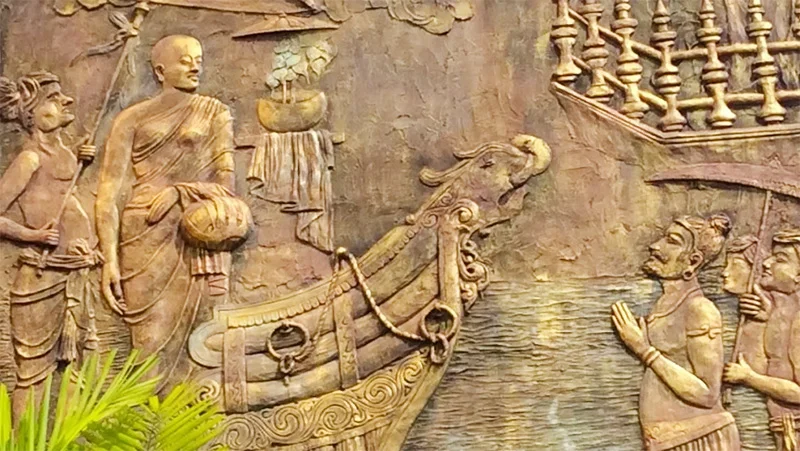
Unduvap Poya, which falls today, has great historical significance for Sri Lanka, as several important events occurred on that day but before looking into these, as the occasion demands, our first thought should be about impermanence. One of the cornerstones of Buddha’s teachings is impermanence and there is no better time to ponder over it than now, as the unfolding events of the unprecedented natural disaster exemplify it. Who would have imagined, even a few days ago, the scenes of total devastation we are witnessing now; vast swathes of the country under floodwaters due to torrential rain, multitudes of earth slips burying alive entire families with their hard-built properties and closing multiple trunk roads bringing the country to a virtual standstill. The best of human kindness is also amply demonstrated as many risk their own lives to help those in distress.
In the struggle of life, we are attached and accumulate many things, wanted and unwanted, including wealth overlooking the fact that all this could disappear in a flash, as happened to an unfortunate few during this calamitous time. Even the survivors, though they are happy that they survived, are left with anxiety, apprehension, and sorrow, all of which is due to attachment. We are attached to things because we fail to realise the importance of impermanence. If we do, we would be less attached and less affected. Realisation of the impermanent nature of everything is the first step towards ultimate detachment.
It was on a day like this that Arahant Bhikkhuni Sanghamitta arrived in Lanka Deepa bringing with her a sapling of the Sri Maha Bodhi tree under which Prince Siddhartha attained Enlightenment. She was sent by her father Emperor Ashoka, at the request of Arahant Mahinda who had arrived earlier and established Buddhism formally under the royal patronage of King Devanampiyatissa. With the very successful establishment of Bhikkhu Sasana, as there was a strong clamour for the establishment of Bhikkhuni Sasana as well, Arahant Mahinda requested his father to send his sister which was agreed to by Emperor Ashoka, though reluctantly as he would be losing two of his children. In fact, both served Lanka Deepa till their death, never returning to the country of their birth. Though Arahant Sanghamitta’s main mission was otherwise, her bringing a sapling of the Bo tree has left an indelible imprint in the annals of our history.
According to chronicles, King Devanampiyatissa planted the Bo sapling in Mahamevnawa Park in Anuradhapura in 288 BCE, which continues to thrive, making it the oldest living human planted tree in the world with a known planting date. It is a treasure that needs to be respected and protected at all costs. However, not so long ago it was nearly destroyed by the idiocy of worshippers who poured milk on the roots. Devotion clouding reality, they overlooked the fact that a tree needs water, not milk!
A monk developed a new practice of Bodhi Puja, which even today attracts droves of devotees and has become a ritual. This would have been the last thing the Buddha wanted! He expressed gratitude by gazing at the tree, which gave him shelter during the most crucial of times, for a week but did not want his followers to go around worshipping similar trees growing all over. Instead of following the path the Buddha laid for us, we seem keen on inventing new rituals to indulge in!
Arahant Sanghamitta achieved her prime objective by establishing the Bhikkhuni Sasana which thrived for nearly 1200 years till it fell into decline with the fall of the Anuradhapura kingdom. Unfortunately, during the Polonnaruwa period that followed the influence of Hinduism over Buddhism increased and some of the Buddhist values like equality of sexes and anti-casteism were lost. Subsequently, even the Bhikkhu Sasana went into decline. Higher ordination for Bhikkhus was re-established in 1753 CE with the visit of Upali Maha Thera from Siam which formed the basis of Siam Maha Nikaya. Upali Maha Thero is also credited with reorganising Kandy Esala Perahera to be the annual Procession of the Temple of Tooth, which was previously centred around the worship of deities, by getting a royal decree: “Henceforth Gods and men are to follow the Buddha”
In 1764 CE, Siyam Nikaya imposed a ‘Govigama and Radala’ exclusivity, disregarding a fundamental tenet of the Buddha, apparently in response to an order from the King! Fortunately, Buddhism was saved from the idiocy of Siyam Nikaya by the formation of Amarapura Nikaya in 1800 CE and Ramanna Nikaya in 1864 CE, higher ordination for both obtained from Burma. None of these Niakya’s showed any interest in the re-establishment of Bhikkhuni Sasana which was left to a band of interested and determined ladies.
My thoughts and admiration, on the day Bhikkhuni Sasana was originally established, go to these pioneers whose determination knew no bounds. They overcame enormous difficulties and obtained higher ordination from South Korea initially. Fortunately, Ven. Inamaluwe Sri Sumangala Thero, Maha Nayaka of Rangiri Dambulla Chapter of Siyam Maha Nikaya started offering higher ordination to Bhikkhunis in 1998 but state recognition became a sore point. When Venerable Welimada Dhammadinna Bhikkhuni was denied official recognition as a Bhikkhuni on her national identity card she filed action, with the support of Ven. Inamaluwe Sri Sumangala Thero. In a landmark majority judgement delivered on 16 June, the Supreme Court ruled that the fundamental rights of Ven. Dhammadinna were breached and also Bhikkhuni Sasana was re-established in Sri Lanka. As this judgement did not receive wide publicity, I wrote a piece titled “Buddhism, Bhikkhus and Bhikkhunis” (The Island, 10 July 2025) and my wish for this Unduvap Poya is what I stated therein:
“The landmark legal battle won by Bhikkhunis is a victory for common sense more than anything else. I hope it will help Bhikkhuni Sasana flourish in Sri Lanka. The number of devotees inviting Bhikkhunis to religious functions is increasing. May Bhikkhunis receive the recognition they richly deserve.” May there be a rapid return to normalcy from the current tragic situation.”
by Dr Upul Wijayawardhana
Opinion
Royal Over Eighties
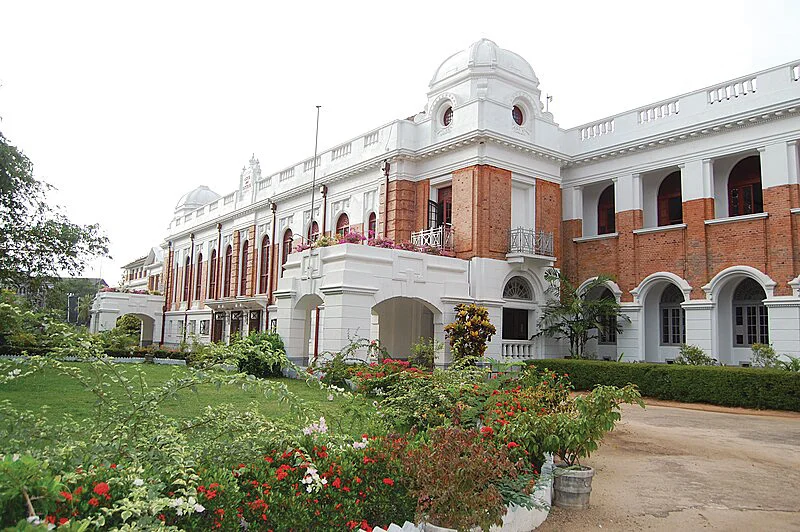
The gathering was actually of ‘Over Seventies’ but those of my generation present were mostly of the late eighties.
Even of them I shall mention only those whom I know at least by name. But, first, to those few of my years and older with whom speech was possible.
First among them, in more sense than one, was Nihal Seneviratne, at ninety-one probably the oldest present. There is no truth to the story that his state of crisp well-being is attributable to the consumption of gul-bunis in his school days. It is traceable rather to a life well lived. His practice of regular walks around the house and along the lane on which he lives may have contributed to his erect posture. As also to the total absence of a walking stick, a helper, or any other form of assistance as he walked into the Janaki hotel where this gathering took place.
Referencing the published accounts of his several decades-long service in Parliament as head of its administration, it would be moot to recall that his close friend and fellow lawyer, J E D Gooneratne, teased him in the following terms: “You will be a bloody clerk all your life”. He did join service as Second Assistant to the Clerk to the House and moved up, but the Clerk became the Secretary General. Regardless of such matters of nomenclature, it could be said that Nihal Seneviratne ran the show.
Others present included Dr. Ranjith de Silva, Surgeon, who was our cricket Captain and, to the best of my knowledge, has the distinction of never engaging in private practice.
The range of Dr. K L (Lochana) Gunaratne’s interests and his accomplishments within each are indeed remarkable. I would think that somebody who’d received his initial training at the AA School of Architecture in London would continue to have architecture as the foundation of his likes /dislikes. Such would also provide a road map to other pursuits whether immediately related to that field or not. That is evident in the leadership roles he has played in the National Academy of Sciences and the Institute of Town Planners among others. As I recall he has also addressed issues related to the Panadura Vadaya.
My memories of D L Seneviratne at school were associated with tennis. As happens, D L had launched his gift for writing over three decades ago with a history of tennis in Sri Lanka (1991). That is a game with which my acquaintance is limited to sending a couple of serves past his ear (not ‘tossing the ball across’ as he asked me to) while Jothilingam, long much missed, waited for his team mates to come for practices. It is a game at which my father spent much time both at the Railway sports club and at our home-town club. (By some kind of chance, I recovered just a week ago the ‘Fred de Saram Challenge Cup’ which, on his winning the Singles for the third time, Koo de Saram came over to the Kandana Club to hand over to him for keeps. They played an exhibition match which father won). D L would know whether or not, as I have heard, in an exhibition match in Colombo, Koo defeated Frank Sedgman, who was on his triumphant return home to Oz after he had won the Wimbledon tournament in London.
I had no idea that D L has written any books till my son brought home the one on the early history of Royal under Marsh and Boake, (both long-bearded young men in their twenties).
It includes a rich assortment of photographs of great value to those who are interested in the history of the Anglican segment of Christian missionary activity here in the context of its contribution to secondary school education. Among them is one of the school as it appeared on moving to Thurstan road from Mutwal. It has been extracted from the History of Royal, 1931, done by students (among whom a relative, Palitha Weeraman, had played a significant role).
As D L shows, (in contra-distinction to the Catholic schools) the CMS had engaged in a largely secular practice. Royal remained so through our time – when one could walk into the examination room and answer questions framed to test one’s knowledge of Christianity, Buddhism, Hinduism and Islam; a knowledge derived mostly from the lectures delivered by an Old Boy at general assembly on Friday plus readings from the Dhammapada, the Bhagavad Gita, the St. John’s version of the Bible or the Koran recited by a student at senior assembly on Tuesday / Thursday.
D L’s history of Royal College had followed in 2006.
His writing is so rich in detail, so precise in formulation, that I would consider this brief note a simple prompt towards a publisher bringing out new editions at different levels of cost.
It was also a pleasure to meet Senaka Amarasinghe, as yet flaunting his Emperor profile, and among the principal organisers of this event.
The encounter with I S de Silva, distinguished attorney, who was on Galle road close to Janaki lane, where I lived then was indeed welcome. As was that with Upali Mendis, who carried out cataract surgery on my mother oh so long ago when he was head of the Eye Hospital. His older brother, L P, was probably the most gifted student in chemistry in our time.
Most serendipitous perhaps was meeting a son of one of our most popular teachers from the 1950s, – Connor Rajaratnam. His cons were a caution.
by Gamini Seneviratne
Opinion
“Regulatory Impact Assessment – Not a bureaucratic formality but essentially an advocacy tool for smarter governance”: A response
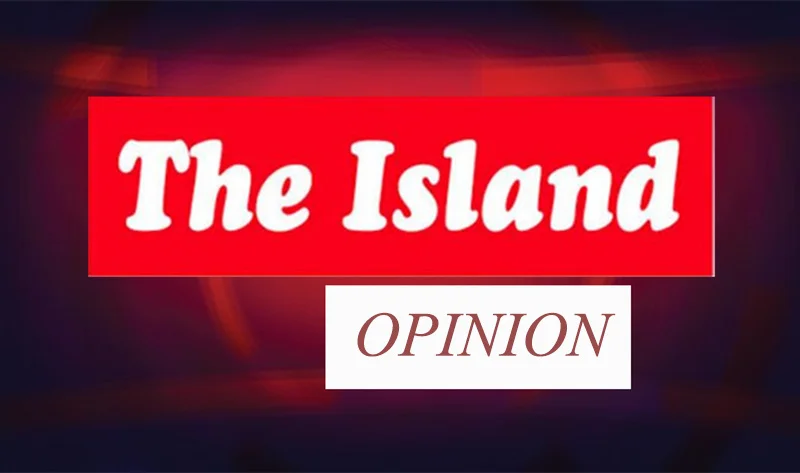
Having meticulously read and re-read the above article published in the opinion page of The Island on the 27 Nov, I hasten to make a critical review on the far-reaching proposal made by the co-authors, namely Professor Theekshana Suraweera, Chairman of the Sri Lanka Standards Institution and Dr. Prabath.C.Abeysiriwardana, Director of Ministry of Science and Technology
The aforesaid article provides a timely and compelling critique of Sri Lanka’s long-standing gaps in evidence-based policymaking and argues persuasively for the institutional adoption of Regulatory Impact Assessment (RIA). In a context where policy missteps have led to severe economic and social consequences, the article functions as an essential wake-up call—highlighting RIA not as a bureaucratic formality but as a foundational tool for smarter governance.
One of the article’s strongest contributions is its clear explanation of how regulatory processes currently function in Sri Lanka: legislation is drafted with narrow legal scrutiny focused mainly on constitutional compliance, with little or no structured assessment of economic, social, cultural, or environmental impacts. The author strengthens this argument with well-chosen examples—the sudden ban on chemical fertilizer imports and the consequences of the 1956 Official Language Act—demonstrating how untested regulation can have far-reaching negative outcomes. These cases effectively illustrate the dangers of ad hoc policymaking and underscore the need for a formal review mechanism.
The article also succeeds in demystifying RIA by outlining its core steps—problem definition, option analysis, impact assessment, stakeholder consultation, and post-implementation review. This breakdown makes it clear that RIA is not merely a Western ideal but a practical, structured, and replicable process that could greatly improve policymaking in Sri Lanka. The references to international best practices (such as the role of OIRA in the United States) lend credibility and global context, showing that RIA is not experimental but an established standard in advanced governance systems.
However, the article could have further strengthened its critique by addressing the political economy of reform: the structural incentives, institutional resistance, and political culture that have historically obstructed such tools in Sri Lanka. While the challenges of data availability, quantification, and political pressure are briefly mentioned, a deeper analysis of why evidence-based policymaking has not taken root—and how to overcome these systemic barriers—would have offered greater practical value.
Another potential enhancement would be the inclusion of local micro-level examples where smaller-scale regulations backfired due to insufficient appraisal. This would help illustrate that the problem is not limited to headline-making policy failures but affects governance at every level.
Despite these minor limitations, the article is highly effective as an advocacy piece. It makes a strong case that RIA could transform Sri Lanka’s regulatory landscape by institutionalizing foresight, transparency, and accountability. Its emphasis on aligning RIA with ongoing national initiatives—particularly the strengthening of the National Quality Infrastructure—demonstrates both pragmatism and strategic vision.
At a time, when Chairmen of statutory bodies appointed by the NPP government play a passive voice, the candid opinion expressed by the CEO of SLSI on the necessity of a Regulatory Impact Assessment is an important and insightful contribution. It highlights a critical missing link in Sri Lanka’s policy environment and provides a clear call to action. If widely circulated and taken seriously by policymakers, academics, and civil society, it could indeed become the eye-opener needed to push Sri Lanka toward more rational, responsible, and future-ready governance.
J. A. A. S. Ranasinghe,
Productivity Specialty and Management Consultant
(rathula49@gmail.com)
-
News4 days ago
Lunuwila tragedy not caused by those videoing Bell 212: SLAF
-
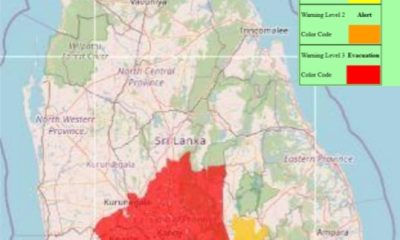
 News3 days ago
News3 days agoLevel III landslide early warning continue to be in force in the districts of Kandy, Kegalle, Kurunegala and Matale
-
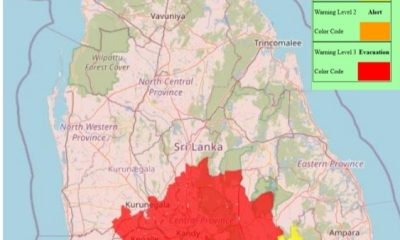
 Latest News5 days ago
Latest News5 days agoLevel III landslide early warnings issued to the districts of Badulla, Kandy, Kegalle, Kurunegala, Matale and Nuwara-Eliya
-

 Features5 days ago
Features5 days agoDitwah: An unusual cyclone
-

 Latest News6 days ago
Latest News6 days agoUpdated Payment Instructions for Disaster Relief Contributions
-

 News1 day ago
News1 day agoCPC delegation meets JVP for talks on disaster response
-
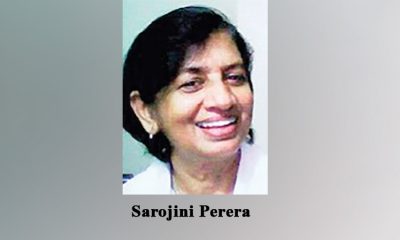
 News1 day ago
News1 day agoA 6th Year Accolade: The Eternal Opulence of My Fair Lady
-

 Latest News6 days ago
Latest News6 days agoLandslide Early Warnings issued to the Districts of Badulla, Colombo, Gampaha, Kalutara, Kandy, Kegalle, Kurunegala, Matale, Moneragala, Nuwara Eliya and Ratnapura













